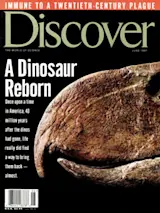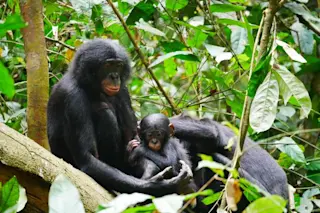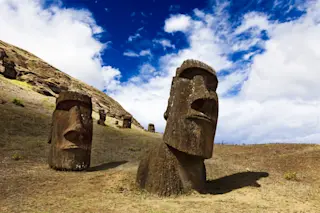For the past 14 years Hartmut Thieme has been working under the shadow of a 90-foot-tall mining monster called a rotary bucket excavator. Thieme, an archeologist at the Institute for Historical Preservation in Hannover, Germany, recovers archeological artifacts imperiled by mining and construction. In the fall of 1994, at a coal pit some 60 miles east of Hannover, Thieme rescued an almost unbelievable find from the jaws of the machine--a cache of perfectly preserved wooden weapons, including three 400,000-year-old wooden spears. He published his study of the spears only recently.
Wooden artifacts are extremely rare, but wooden artifacts of this age, and hunting weapons at that, are nothing short of astonishing. The hunting tools, the oldest wooden weapons in existence, owe their perfect preservation to an airtight layer of peat covering the sediments in which the spears were found. Along with the spears, Thieme found a shorter weapon, which may have been used to stab game at close range; the butchered remains of more than ten horses; stone tools; and burned sediments that may mark the remains of several fireplaces. The spears range in length from six to seven and a half feet and were made from the trunks of spruce trees. All the spears are carefully weighted--their width is greatest about a third of the way from the tip, placing the center of gravity at the front end, like a javelin. The spears were obviously thrown, not thrust, at their targets.
Meadows of spruce and fir probably dotted the plains of northern Germany 400,000 years ago. The hunters must have felled trees, stripped them of bark and branches, and whittled the weapons to a sharp point. It was very good work, Thieme says. The hunters appear to have brought stone tools with them for butchering their kill, and tiny stone flakes suggest they sharpened the tools at the site. There was a long, narrow lake here, says Thieme. There must have been a group of hunters waiting for the horses to come, eating and drinking along the lake.
Crafting weapons, bringing butchering tools, knowing where to find game--such skills were thought to have originated with modern humans around 40,000 or 50,000 years ago. Many researchers assumed that a 400,000- year-old human ancestor in northern Europe, probably a late form of Homo erectus, would have been a scavenger. Now we have proof that very sophisticated hunting strategies, with all this foresight and planning, started very early, says Thieme.
Thieme hasn’t found any human remains at the site, but he hopes his continuing excavations will yield more results. That the weapons are so well made suggests they are the result of a long tradition of wooden toolmaking, an aspect of human behavior that archeologists don’t know much about. For the first time, we have information about what was made besides stone tools, says Thieme. Maybe they had other wooden objects too. We have a lot more work to do at this site.














